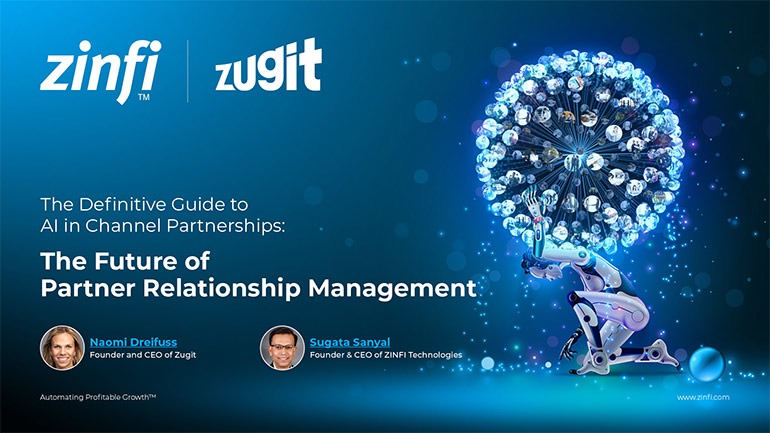Glossary - How to - Channel Development Strategy
How to Implement an Effective Channel Development Strategy?
Introduction
Understanding Channel Development
Channel development is the strategic process of building, managing, and optimizing indirect sales channels to drive revenue and market expansion. Companies use channel development to establish partnerships with distributors, resellers, system integrators, and other intermediaries who help market and sell their products or services. This approach enhances market penetration, reduces operational costs, and creates opportunities for business scalability.
In partner relationship management (PRM), channel development ensures seamless partner onboarding, enablement, and engagement. Organizations with effective automation can streamline partner recruitment, training, and performance tracking, ensuring their channel partners have the tools and knowledge to succeed.
Key Takeaways:
Identifying the Right Channel Partners:
Selecting the right partners is crucial for successful channel development. Organizations must analyze potential partners based on the following:
- Market alignment: Ensure partners operate in target markets that align with your business objectives.
- Capabilities and expertise: Evaluate technical skills, sales experience, and existing customer base.
- Reputation and reliability: Research a partner’s credibility, market presence, and past performance.
Using PRM software, businesses can automate partner recruitment, track applications, and score potential partners based on predefined criteria.
Establishing a Robust Partner Onboarding Process:
A well-structured onboarding process helps new partners integrate seamlessly into your ecosystem. Key elements include:
- Training programs: Provide product knowledge, sales enablement resources, and certification programs.
- Marketing support: Equip partners with co-branded content, lead generation tools, and advertising support.
- Performance tracking: Use PRM dashboards to monitor engagement and sales activities.
PRM platforms facilitate efficient onboarding through self-service portals, e-learning modules, and real-time performance analytics.
Developing an Effective Partner Enablement Strategy:
To ensure partner success, organizations must provide ongoing support and enablement, including:
- Sales and technical training: Continuous education through webinars, workshops, and certifications.
- Marketing resources: Pre-designed campaigns, email templates, and digital asset libraries.
- Incentive programs: Discounts, commissions, and rebates to motivate partners.
A PRM system can automate enablement efforts by granting partners access to tailored content and tracking their progress.
Implementing a Performance-Based Partner Management System:
Tracking partner performance helps identify high-performing partners and areas for improvement. Organizations can:
- Set clear KPIs: Define sales targets, lead generation metrics, and customer satisfaction scores.
- Monitor partner activities: Use PRM dashboards to analyze sales data and marketing effectiveness.
- Optimize support: Provide targeted assistance based on performance insights.
With real-time analytics and automated reporting, PRM platforms streamline performance management and help organizations adjust their strategies accordingly.
Strengthening Partner Relationships for Long-Term Growth:
Sustained engagement with partners leads to long-term success. Businesses should:
- Foster collaboration: Regular check-ins, partner advisory councils, and feedback loops.
- Recognize achievements: Partner awards, exclusive incentives, and joint marketing opportunities.
- Leverage automation: PRM systems enable streamlined communication, resource sharing, and performance tracking.
By continuously engaging with partners and optimizing the support provided, organizations can maximize the effectiveness of their channel development efforts.
Summary of Key Takeaways:
- Identifying the right channel partners ensures alignment with business goals.
- A structured onboarding process enhances partner readiness and productivity.
- Continuous enablement fosters partner growth and market success.
- Performance tracking helps optimize partner engagement and support.
- Strengthening relationships secures long-term business growth.
Key Examples:
- Automotive Manufacturing: Automotive manufacturers rely on channel development to distribute vehicles, spare parts, and aftermarket services through dealerships and third-party retailers. A robust PRM system ensures smooth dealer onboarding, inventory management, and promotional support.
- Consumer Electronics: Tech companies leverage channel development strategies to work with retailers, resellers, and online marketplaces. PRM software helps manage product launches, promotional campaigns, and customer support training for partners.
- Energy Production: Energy providers utilize channel partnerships to expand the distribution of renewable energy solutions. Effective partner enablement programs ensure compliance with industry regulations and enhance technical expertise.
- Financial Services: Banks and insurance firms use indirect sales channels to market financial products through brokers and affiliates. A PRM platform helps manage partner commissions, lead tracking, and compliance monitoring.
- Food and Beverage: Restaurants and packaged food companies collaborate with distributors, wholesalers, and retail chains. Channel development strategies focus on logistics management, inventory optimization, and promotional support.
- Healthcare Services: Medical device manufacturers and pharmaceutical companies work with distributors, hospitals, and clinics. PRM platforms facilitate regulatory compliance, training, and marketing collaboration.
- Information Technology: Software vendors and IT service providers depend on channel partnerships for sales and implementation. PRM software automates lead distribution, training, and performance tracking to optimize channel effectiveness.
- Pharmaceutical Development: Pharmaceutical firms use indirect sales channels to distribute drugs and medical equipment globally. A strong PRM system helps manage compliance requirements, partner training, and sales reporting.
- Retail Industry: Retail brands collaborate with franchisees, wholesalers, and e-commerce platforms. A well-defined channel development strategy ensures brand consistency, streamlined inventory management, and effective promotional campaigns.
- Telecommunications: Telecom companies partner with resellers and managed service providers to expand their reach. PRM platforms help manage partner certification, service quality tracking, and revenue-sharing models.
Conclusion:
Effective channel development is essential for organizations to scale their business and enhance market reach. Companies can create a robust and sustainable partner ecosystem by identifying the right partners, streamlining onboarding, providing ongoing enablement, and monitoring performance.
PRM automation optimizes channel development, ensuring seamless collaboration, efficient resource distribution, and real-time performance tracking. Organizations that invest in strategic channel development achieve greater market penetration and strengthen long-term partnerships that drive business growth.
Associated Keywords:















